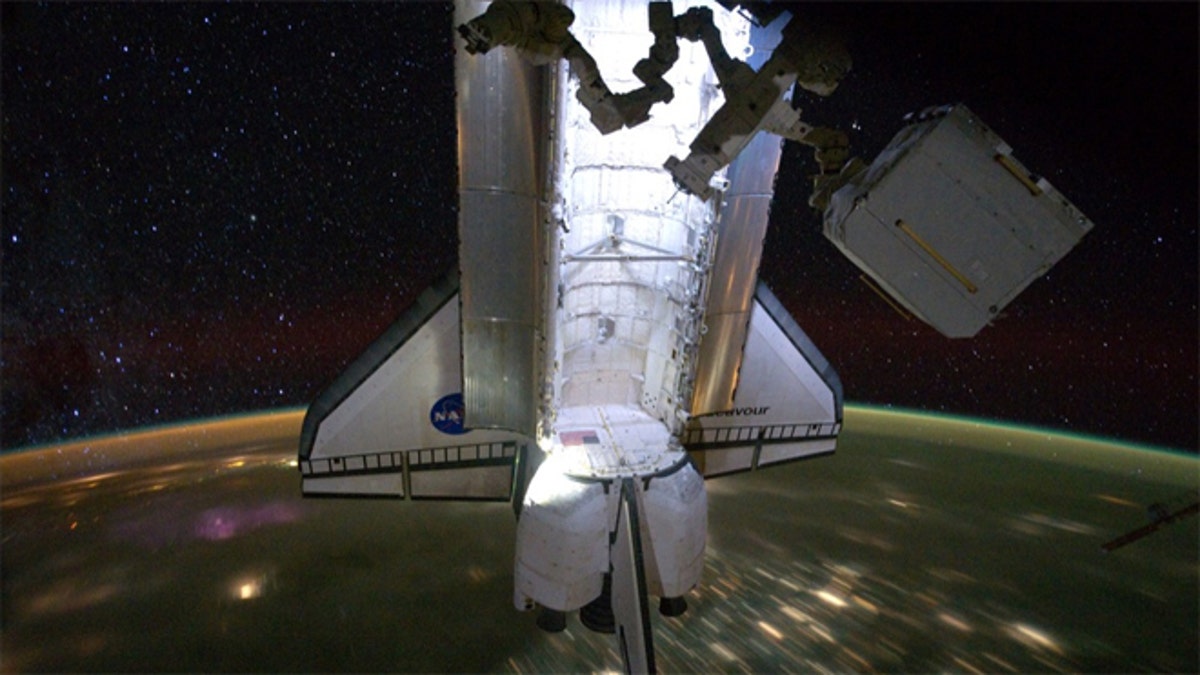
The $2 billion AMS experiment being removed from space shuttle Endeavour's cargo bay at the International Space Station. (NASA)
Space’s largest ever science experiment celebrated its one year anniversary this week having collected over 17 billion “cosmic ray” events in its search for the secrets of the universe.
While the European Organization for Nuclear Research (CERN) continues to make headway on planet Earth with the recent discovery of the “God particle” or Higgs Boson at the Large Hadron Collider, CERN is now looking to the heavens, having successfully equipped the International Space Station with the Alpha Magnetic Spectrometer (AMS) just over a year ago.
In that time, the AMS has already collected more cosmic ray data than has been recorded over the last hundred years since physicists first started looking.
“The AMS detector has so far achieved everything we expected of it,” Nobel laureate and AMS spokesperson Samuel Ting said in a statement. “That’s a great credit to the team that put the detector together, and the team that installed it on the ISS."
[pullquote]
That team included commander Mark Kelly, pilot Gregory H. Johnson and mission specialists Michael Fincke, Greg Chamitoff, Andrew Feustal and the European Space Agency’s Roberto Vittori, members of space shuttle Endeavour’s final flight, STS-134.
The STS-134 mission was the last flight for the space shuttle Endeavour, crewed by commander Mark Kelly, pilot Gregory H. Johnson and mission specialists Michael Fincke, Greg Chamitoff, Andrew Feustel and the European Space Agency’s Roberto Vittori.
“It’s a real privilege to visit CERN today, and we’re proud to have played a part in launching the AMS experiment’s fascinating research program,” said Commander Kelly who was accompanied by his wife, former U.S. congresswoman Gabrielle Giffords at an honorary tree planting ceremony celebrating the team’s success.
Launched on 16 May last year, the detector was up and running by 19 May, and since then has collected billions of special energy events as scientists look to further unravel the mysteries of the universe, such as the detection of dark matter and antimatter.
The AMS detector’s first year in space has been a learning curve, according to the CERN team. The data collected has been used to calibrate the detector and fully understand its performance in the extreme thermal conditions encountered in space.
“Among AMS’s achievements is that for the first time, we’ve been able to identify electrons with energies exceeding 1 TeV before they enter the atmosphere,” said Ting.
“This holds out great promise for the AMS research program that’s now getting underway.”
